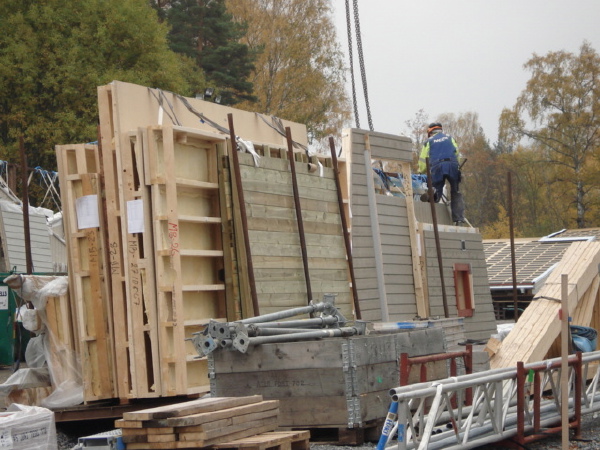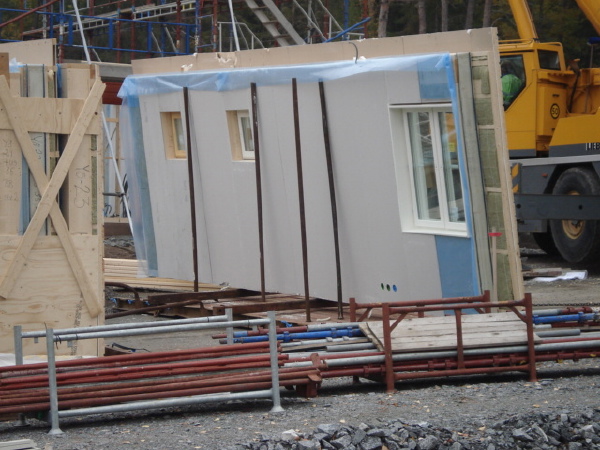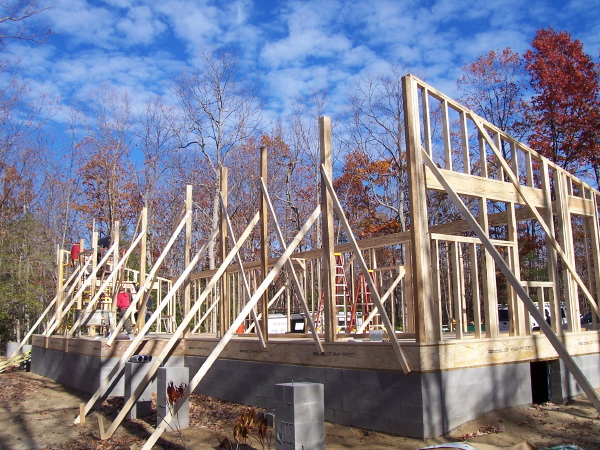Building the Modern House - an owners tale by Dan Akst
Daniel Akst is an author and journalist who has written several articles covering the recent prefab and Re-Modern movement. His articles have appeared in the Wall Street Journal, New York Times and he's even written about modern homes for This Old House. Most significantly he has built his own modern house and written extensively about it. These are a worthwhile read for anybody building their own modern home. Dan first offered up his story in a three part article that appeared in Money Magazine. You can read the text of these articles on his own web site here: Part 1 Part 2 Part 3 He also wrote a shorter account with more of a design emphasis for Metropolis Magazine that you can read at the on their web site: link. Its interesting that at the end of this article Dan calls for the production of decent house plans for modern homes: ...If they did, they might want to use a stock plan; but here is another reason why more interesting houses don't get built, even by individuals who care about good design. Most of the house plans sold through books and on the Internet are awful; a few decent ones are available (including some in the Life magazine's "Dream House" series) but virtually none are Modern, unless what you really want is a chunky-looking "contemporary" with diagonal wood siding. The absence of good Modern stock plans means that people who want this kind of house have to hire an architect, at fees ranging from a few thousand dollars to perhaps 15 percent of the construction cost. Although Modern architecture remains suffused with the rhetoric of idealism, even relatively prosperous families who are thinking of sponsoring it will beg off unless the entire clanking apparatus of home-ownership--all of it geared to the lowest common denominator of design--can be brought around to accommodate something more interesting. Modular housing might be one answer. Another would be the publication of some first-class stock plans that specify standard materials to achieve quietly fabulous results. Incredibly this is just what we have set out to do, and our customers have in fact done. Dan's article was in the November 2002 issue of Metropolis. Our plan site went live on November 4th, 2002. He's also a good novelist - I've read a couple of his books and enjoyed them. More info about the rest of his work on his web site Akst.com.
Technorati Tags: modern design, modern house
Continue reading "Building the Modern House - an owners tale by Dan Akst"

 Click through below to continue reading..
Click through below to continue reading..
 But the majority of prefab in the USA is in the form of modular construction. Modular construction reduces the field connections to a a few major utility connections when the boxes are placed on the foundation, but otherwise are much more complete when they arrive at the site. Granted, this is not the reason why modular is more popular in the US. Modular housing here grew out of motor-home construction, which was a more permanent version of a trailer. When the flimsy construction of motor-homes became an obvious problem in the US it was put under a nation wide spec known as a HUD Code. At that point the industry split into factories that continued to build motor homes under the new rules, and factories that adapted to building to local site built construction codes which became the modular industry. That has dominated the US prefab business ever since. Its popularity here is due to administration - not because it makes construction sense. And how could it make construction sense? Shipping a house in big pieces is tantamount to shipping air. There is a reason why Ikea ships furniture in a flat-pack. The shipping is so much more efficient for flat goods, than big boxy hollow goods. The challenge becomes how to complete as much of the house as possible while still being able to ship it flat. Whole houses arrive on two trucks rather than 4 or 5.
Next we'll get into more detail about how these houses go together.
Previously:
But the majority of prefab in the USA is in the form of modular construction. Modular construction reduces the field connections to a a few major utility connections when the boxes are placed on the foundation, but otherwise are much more complete when they arrive at the site. Granted, this is not the reason why modular is more popular in the US. Modular housing here grew out of motor-home construction, which was a more permanent version of a trailer. When the flimsy construction of motor-homes became an obvious problem in the US it was put under a nation wide spec known as a HUD Code. At that point the industry split into factories that continued to build motor homes under the new rules, and factories that adapted to building to local site built construction codes which became the modular industry. That has dominated the US prefab business ever since. Its popularity here is due to administration - not because it makes construction sense. And how could it make construction sense? Shipping a house in big pieces is tantamount to shipping air. There is a reason why Ikea ships furniture in a flat-pack. The shipping is so much more efficient for flat goods, than big boxy hollow goods. The challenge becomes how to complete as much of the house as possible while still being able to ship it flat. Whole houses arrive on two trucks rather than 4 or 5.
Next we'll get into more detail about how these houses go together.
Previously:
 images from the
images from the  What a beautiful scene! Look at that sky. There are a couple more high res shots from this day in the
What a beautiful scene! Look at that sky. There are a couple more high res shots from this day in the 

